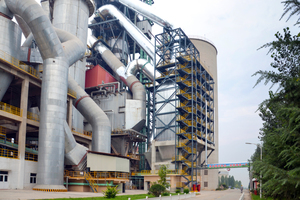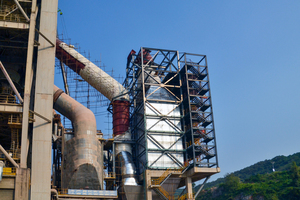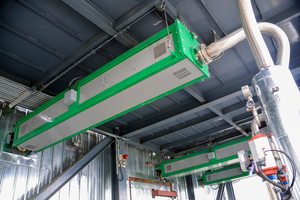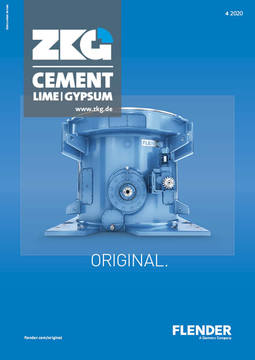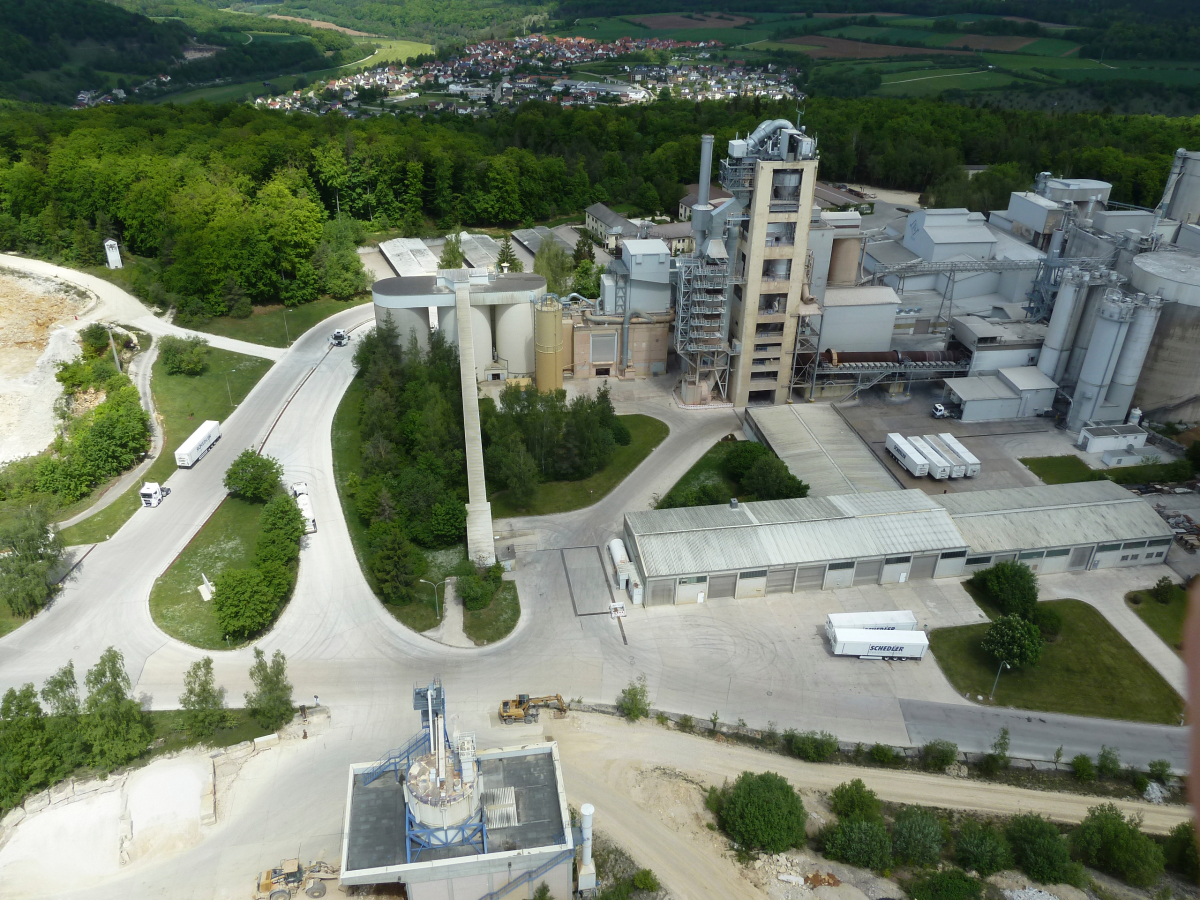A high-dust SCR plant at Conch Cement
Major cement manufacturers have taken measures to ensure compliance with the gradually increased limitations for nitrogen oxide and ammonia emissions. Anhui Conch Cement Co., Ltd., a leading company in the industry, has equipped three 5000 t/d cement production lines with SCR technology from Maerz, thus successfully demonstrating compliance with the most stringent emission standards for cement production in China.
In various Chinese provinces the limit values regarding nitrogen oxide and ammonia emissions are going to be reduced or have already been reduced in the recent past. The target value for the CemCat SCR plants in Jining and Zhongguo is 100 mg/Nm3 NOX (hourly average) and 8 mg/Nm3 of ammonia slip (daily average). The current state of technology allows these emission specifications to be achieved reliably with CemCat’s High Dust SCR technology.
High dust/high temperature CemCat SCR plants in Jining and Zhongguo
After a construction period of about five months, the CemCat SCR plant in Jining was commissioned in August 2019 and the CemCat SCR plant in Zhongguo in October 2019.
CemCat designed these High Dust / High Temperature SCR plants for the denitrification of 340000 Nm3/h flue gas per kiln line (see the Table) thus ensuring permanent compliance with the emission specifications.
Compared with Semi Dust SCR plants, the High Dust SCR plants are very low in pressure drop. The overall pressure drop of a High Dust SCR plant is about 500 Pa, with a temperature drop 10° C lower than that of the Semi Dust plant. The ammonia injection amount can be greatly reduced leading to an ammonia consumption of the cement plant of more than 60 % lower than before the SCR was commissioned. Compared with Semi Dust plants, they have less variety of equipment and therefore stability is greatly improved. High Dust SCR plants have the lowest operating costs.
After applying CemCat’s High Dust/High Temperature SCR technology, the Jining plant (see the Table) can meet and undercut the minimum nitrogen oxide and ammonia emission standards.
Proven technology since 2006
In more than ten cement plants in several countries, CemCat has been able to gain years of experience in reducing nitrogen oxide to such low values. For more than a decade Maerz Ofenbau has successfully proven that CemCat High Dust/High Temperature SCR plants in cement factories are ideally suited to reliably and continuously reduce nitrogen oxide and ammonia emissions.
Since August 2013 all established SCR plants have been operating at an annual availability rate of above 95 %.
Building the new high dust/high temperature SCR plants for Conch Jining and Zhongguo
Anhui Conch was responsible for the complete concrete and structural steelwork, including provision of the material. Maerz supplied all core components including the catalyst modules from Europe and Anhui Conch installed them. Anhui Conch was responsible for the construction, Maerz for commissioning. Due to good cooperation, realization of the project took place within ten months, which compared with typical European projects denotes a time saving of over 50 %.
The SCR housing, where the catalysts are installed, was preassembled in the workshop and then disassembled for transport. At a preassembly site in the plants at Jining and Zhongguo the reactor walls could then be welded quickly and precisely using an assembling aid. Subsequently, the single layers only needed to be lifted by crane and joined to their final installation position. Preliminary work in the workshop significantly reduced construction time at the plant and improved the quality of workmanship.
The High Dust/High-Temperature SCR plants in Jining and Zhongguo were built on concrete tables. The footprint of the foundation of a single SCR plant is approximately 16 x 17 m.
Dust cleaning system
The key component of a well-functioning High Dust SCR installation in a cement plant is the dust cleaning system (see below). The requirements differ significantly from classic soot blowers, which are used in other industries.
The proven CemCat dust cleaning system ensures that the high dust load of approx. 95 g/Nm3 (approx. 30000 kg/h) in the Jining and Zhongguo plants is blown through the catalyst elements together with the flue gas and does not clog them up. Cement dust contains a lot of clay and is much stickier than dust in other industries. This makes dust cleaning even more difficult.
//www.cemcat.com" target="_blank" >www.cemcat.com:www.cemcat.com

